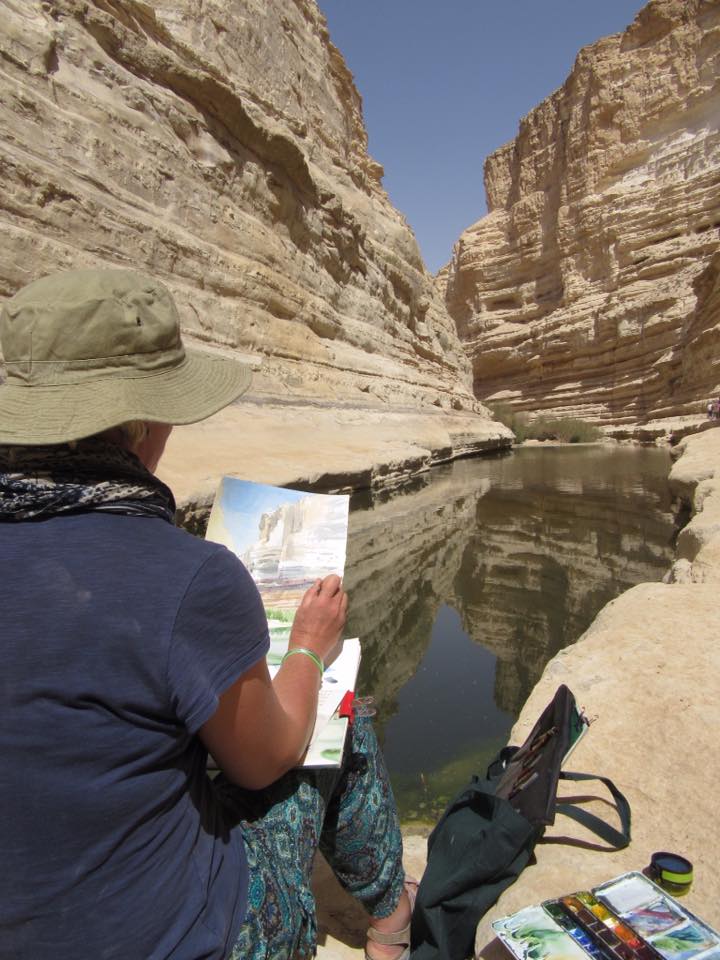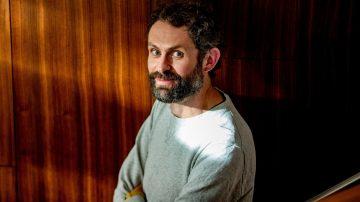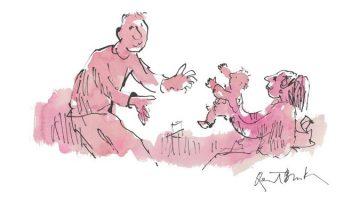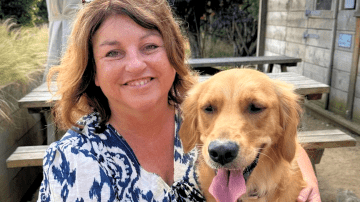Look around you and you’ll notice that there are a lot of artists living in the Channel Islands and many of them draw inspiration from our incredibly beautiful surroundings.
The rugged cliff landscapes, sweeping bays, ever changing seascapes and light quality has been captured by dozens of painters, photographers, sculptors and sketchers, but in my opinion, there’s a verve and energy about artist Rosie Guille’s work that sets her apart.
Sark – a very special place
Rosie was born and brought up in Sark – for the vast majority of her life that’s where she was based and it has informed her work as an artist.
“I feel very privileged to have grown up on Sark, and to have brought my own children up there. I think it’s one of those places that’s very rare. You’ve got no cars, no streetlights you’re basically in nature every time you go out of the house,” she says.
“My family is descended from one of the first families to colonise the island in 1565, so I think that’s why I feel so passionate about Sark.
“I don’t live there anymore because I’ve met a Guernsey man and I’m now living in Guernsey but Sark is where I grew up and it’s a very special place.”
Freedom and expression
Rosie moved to Guernsey just over a year ago and is now capturing what she sees around her, literally taking her easel outside, pegging her paper to the board, and creating art from what’s right in front of her-en plein air. En plein air translates literally to ‘in the open air’.
For Rosie, this way of working represents a freedom that’s far removed from how her creative journey began.
Rosie started out as an illustrator, focusing on natural history, studying a four-year course at Bournemouth & Poole College of Art & Design. From there she progressed to the Royal College of Art in London where she completed a Masters in natural history illustration and ecological studies.
“But while I was studying illustration I was also working outdoors sketching and painting from life and that’s really where my love of painting lay, rather than being indoors, working from specimens.”
“A lot of people work from subjects or photographs that they have taken and then they use them as reference back in the studio. I am much happier outdoors painting and trying to capture the essence of a subject, be it a bird or a landscape or seascape.
“I am now more of a fine artist, rather than an illustrator.”
A natural perspective
En plein air is the style that springs to mind when we think of artists back in the 19th Century. Sitting outdoors in a fold-out chair with a palette of watercolours creating charming landscapes.
“It’s quite fashionable now, like it was back in the Impressionists’ day, working outdoors in all weathers,” says Rosie.
“You’ve just got to be prepared in the winter, you put your gloves on and your hat and if it’s blowing a gale you’ve got to make sure that your paper’s pinned down well.
 I used to work, sitting down, but now I’ve got a pochade easel which makes life easier. Because I am standing up to paint it frees up my arm movements, whereas when I’m sitting down I feel a little hunched up and it’s not quite so natural. Standing also gives a different perspective.
I used to work, sitting down, but now I’ve got a pochade easel which makes life easier. Because I am standing up to paint it frees up my arm movements, whereas when I’m sitting down I feel a little hunched up and it’s not quite so natural. Standing also gives a different perspective.
“I’ve really only been painting on my easel since I moved to Guernsey. I find it a lot easier but obviously when the wind is blowing I can’t always use it, so sometimes I take the box off the tripod and sit down to work.
“I worked in one of the storms that we had, I think it was storm Ciara last winter.
It was blowing, probably a force 10, and the sea was so incredible that I felt I really wanted to go and try and capture the drama. So off I went to Grandes Rocques. I had my pastels in the box, the paper firmly pinned to the board and the pochade box held tightly in my lap.”
“The pastel I produced that day was one of my more successful en plien air pieces. The colours of the sea were vibrant, and the pastel marks were energetic and full of life.
“The artists that I follow on social media work in some of the most challenging and inhospitable places around the world. By skill, determination and talent, they can really capture the atmosphere and convey so much about a place.
“I am always thrilled when someone reacts to one of my paintings in the same way.
“I just love being able to pass on that kind of love for a place.”
Rosie was trained using watercolour, but she now experiments with other mediums.
“When I was training everything was watercolour and that was my first love, but now
I’m much more interested in using either pastels or oils.
“With watercolour, the process is very methodical, you’ve got to plan a piece of work out before you actually start painting. Oils and pastels give me additional ways to express light and drama.
There have been occasions where Rosie has lost her work to nature.
“Sometimes they get ripped off the board and end up in the sea!”
“I remember sitting on the end of the slipway at Cobo earlier this year. The wind was blowing about a force six and I had all my pastels out next to me. The conditions made things very challenging but I managed to get the picture done, and I was really pleased with how it had gone when a gust of wind took it off the board.”
“Luckily, I managed to catch it just before it blew into the sea. Once it was framed it looked amazing, and it was a very popular painting at my solo exhibition, which I held in Guernsey over the summer.
Rosie’s paintings and prints can be seen and are for sale through her Instagram and Facebook pages (Rosanne_Guille_Art) or at the Sula Gallery, the Quay Gallery and the Coach-house Gallery in Guernsey.














